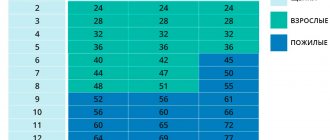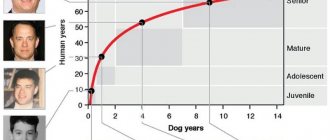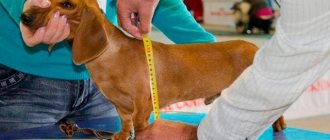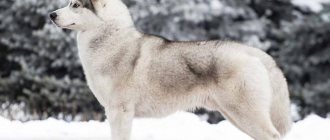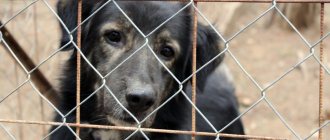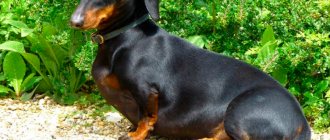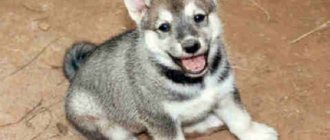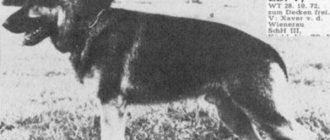How to tell a dog's age by its teeth? Dogs are very loving animals of the world and they also have a life period. It depends on the breed of dog they will live according to their lifespan, we can also see that there are some big dogs with a long lifespan. The age of any dog is easy to determine. You can explore by observing your dog's developing teeth.
They have exceptional qualities and their teeth easily explain their age. But by looking at puppies, age can be determined with greater accuracy. In adult dogs this becomes difficult to determine. But for any dog it only gives a rough estimate. Some points will help you to know how to predict the age of any dog, be it an adult or a puppy.
By external signs
Umbilical cord. The presence of an umbilical cord indicates that the puppy was recently born. If the umbilical cord is still fresh, the puppy is no more than a day old. On the 2nd day it dries up, and on the 3rd it is already separated from the dog’s belly.
Eyes. The puppy remains blind until 10-20 days of its life. The eyes should open before the first month. The cloudy and gray-blue color of the iris is characteristic of tsutsiki for up to a month. Clear eyes are characteristic of dogs one month and older.
It is worth paying attention to the dog's gaze
Ears. In the first days of life, the puppy does not hear anything. The baby will begin to recognize the first sounds only after the second week of life, and to fully hear by the month. As the puppy grows, its ears grow.
Weight. Obviously, a small puppy will weigh differently than an adult dog. There are tables of approximate weights for small and large breeds at all ages.
For dwarf breeds:
For large and medium breeds, other parameters are presented. Knowing how much a dog of a particular breed should weigh at maturity, you can find out whether it has reached canine adulthood.
You need to be especially careful with giant breeds, as their dimensions develop very, very rapidly. One-month-old Labrador puppies weigh from 3.4 to 3.6 kg and grow to 30-40 within two years. The weight of an 11-month-old Rottweiler can already reach 50 kg.
Life expectancy and age groups
Dogs live on average from 9 to 20 years. This factor largely depends on the size of the animal. Small breed dogs usually live to older ages than their larger counterparts. Giant dogs such as mastiffs, Great Danes and St. Bernards have the shortest life cycle. There are three main groups into which all dogs can be roughly divided:
- puppy;
- young animals;
- adult representative of the species.
Technically, a dog can be considered a puppy for the first two months of its life
From the moment of birth until 8 weeks, the animal is considered to be a puppy. From this age until reaching 18 months - young animals. Dogs over this age are considered adults.
How to determine the age of a puppy by its teeth
Puppies are born not only blind, but also completely toothless. The first milk teeth (canines, hooks) erupt in the third or fourth week of life. The canines appear first, then the middle incisors and molars.
A full set of milk teeth (28 pieces) is noted in puppies at 1.5-2 months of age, of course, if the animals do not have congenital pathologies and grow and develop normally. At this age, puppies' teeth are snow-white or cream-colored, small, but very sharp. Located as close to each other as possible.
- At 2.5-4 months, the front teeth and incisors change.
- From 3 to 5 months, premolars (middle incisors) change.
- Before six months, the puppy's edges should change; after six months, new permanent fangs should appear.
Dogs, like humans, change their teeth once in a lifetime. In puppies, the change of milk teeth occurs from 2 to 6-7 months, up to a maximum of 8 months. At this time, puppies become restless and try everything by heart. Possible loss of appetite and increased temperature.
By 4.5-5 months, adult incisors have erupted, first premolars and molars appear; by six months, canines, second and fourth premolars, and second molars appear. By 7 months - third molars.
With normal development, all 42 molars in a dog should appear by the age of one year.
So, let's start examining the puppy.
If the baby’s umbilical cord has not even dried yet, then in front of you is a lump that was born literally 1-2, maximum three days ago
If the umbilical cord is dry, then we pay attention to whether the baby has hearing. No? This means the dog is not even one week old yet, because hearing begins to emerge from 7-9 days, but it develops gradually, not immediately
Immediately after the appearance of hearing, the eyes begin to gradually open, usually this happens in the second week, approximately 10-12 days.
And that’s all, the period has ended when you can very accurately and very easily determine the age of a puppy. If he is more than a month old, then the approximate date of birth can only be determined by his teeth. Most likely, a veterinarian will do this, but you can do it, guided by the information below.
The main method for determining the age of a dog
It’s worth starting with the fact that experts divide dogs into more than three age categories:
- puppies – dogs from birth to 2 months;
- young individuals - from 2 to 18 months;
- adult dogs - over one and a half years old.
Like humans, dogs' teeth change once, and if he lived in suitable conditions, had good nutrition and a correct bite, then his age can be determined from his teeth with maximum accuracy.
Correspondence of the condition of the teeth to the age of the puppy.
Regardless of the breed of dog (you are determining the age of a toy terrier or a mongrel in front of you), experts highlight the following features:
- if there are no teeth in the oral cavity, we can say that this is a newborn baby, no more than two weeks old;
- at three weeks the baby’s fangs begin to erupt;
- at the age of one month, the puppy's front incisors appear;
- 35 days after birth, the dog’s molars begin to erupt;
- Puppy age from one to two months can be determined by the presence of the entire dentition (subject to the full development of the pet).
If a puppy at the age of two months does not have a full set of teeth, this means that he has health problems. In this case, you should consult a veterinarian.
Other signs of age in dogs are changes in dentition:
- At the age of two to six months, the puppy's front incisors change, including the hooks. Such a large difference in the age category is explained by the specifics of a particular breed. For example, in a toy terrier, the front incisors begin to change at six months.
- From three to seven months, a change in the lateral and middle teeth is observed.
- By six months, puppies lose their baby fangs, and new ones begin to grow in their place.
- A complete change of dentition is completed by eight months, in some dogs this happens a little earlier.
The final stage of determining the puppy’s age occurs at one year. The dog is fully formed, has a full muscle corset and coat (often it is absent, which is due to the characteristics of the dog’s breed). A puppy’s teeth at the age of 12 months are snow-white, with slight tubercles that resemble the notches on a knife blade (the dog usually uses them to bite out parasites).
In the future, it is by these tubercles, which have an unusual trident shape, that one can determine how old the dog is. Based on the level of abrasion, specialists (dog handlers or veterinarians) can calculate the age category of the animal.
Their condition is divided into several stages:
- Two years. During this period, the dog’s lumpy part of the lower toes wears off. No further changes are observed.
- Four years. At this age, the dog experiences abrasion of the toes on the upper jaw. In addition, a four-year-old dog’s teeth lose their original shine and become dull.
- At the age of five, with good nutrition and a normal lifestyle, the pet's tubercles wear out on all its incisors. Often at this age you can notice blunting of the fangs. As for the enamel, it becomes more yellow.
- After six years, significant changes occur in the dog’s oral cavity. The incisors begin to change their shape (become more concave). Therefore, at this age it becomes very difficult for experts to determine the correctness of the bite. In addition, the enamel becomes more yellow.
- From 8 to 10 years, pronounced tooth wear is observed. The fangs begin to wear down and, in addition to yellowness, a coating appears on them. At the same age, dogs can develop tartar (due to lack of proper care for the pet’s teeth).
- After 10 years, a four-legged pet’s teeth become loose and some of them fall out. Caries may also occur. It is by this sign that experts can determine that the animal in front of them is of advanced age.
Structure of a dog's jaw
Each breed is individual in its appearance and structure. This also applies to the jaws. Dog trainers and experts say that on average, all dogs should have 42 teeth: 22 are located in the upper jaw, 20 in the lower jaw.
More detailed information can be found by looking at the table:
| Jaw | Incisors | Fangs | False roots (premolars) | Molars (molars) |
| Upper | 6 | 2 | 8 | 4 |
| Lower | 6 | 2 | 8 | 6 |
The number of incisors, of course, may differ, but the structure of a dog’s jaw is absolutely the same in all dog breeds. It consists:
- from a root located inside bone tissue;
- neck, located on top of soft tissue;
- crowns are a continuation of the dental neck, the component and main element of which is hard enamel, which is responsible for the strength of the teeth and allows the dog to easily gnaw bones and bite off meat.
The structure of the dentition
First of all, you need to understand that dogs have 4 types of teeth. These are incisors, canines, premolars and molars. Incisors are the smallest teeth that are located in the center of the jaw - when you open a dog's mouth, they are the first ones you see.
A healthy dog has 12 incisors, 6 on top and the same number on the bottom.
They are followed by fangs. There are 4 of them - 2 each above and below, to the right and to the left of the incisors. These are the largest, sharpest and longest teeth in a dog's mouth. Following them are the premolars, 4 of them on each side. And behind them come the molars, there are 4 on top - 2 on each side, on the bottom - 6, 3 on each side.
Relationship between a dog's age and human years
Are you wondering how old your four-legged friend will be, in human age? To get the equivalent human age of a pet, you just need to multiply it by 7 or 6. This is approximately the case. Compare: dogs reach adulthood already at the age of two, when people need 18 years to do this. At 18 months, the dog will feel as fresh and cheerful as a person at 20.
On average, a dog lives up to 12 years. The figure depends on the breed, quality of life, genetics and other factors. Converted to human years, this would be approximately 64-77 years. When a dog turns 16, he feels like a full-fledged 90-year-old inhabitant of our planet.
There is another version. To obtain a dog's age similar to a human's, the multipliers must be gradually changed. For example, when a puppy is 2 months old, we multiply its age by 7, we get 14 human years. But upon reaching the age of six months, the puppy jumps sharply in development and its age is already equal to 5-6 human years, since the multiplication coefficient immediately changes to 10. 1 year is equal to 15 human years.
It is impossible to compare human and dog (or cat) ages with 100% objectivity, so we are content with those calculations that are quite realistic to make.
Method number 2. According to muscle condition
There is another way to approximately determine the age of a dog as a result of an external examination. This is the feeling of the animal's muscles.
- If you feel elastic, strong muscles under your hands, then the pet is young. Like a person, he is full of strength and energy. Most likely, he will be constantly on the move, and he will not need much time to rest.
- If you feel flabby muscles or even signs of obesity when palpating, then most likely this is an elderly animal. Here we must make a digression and say that a dog is considered elderly from the 8th-9th year of life (if translated into human years, this is approximately more than 60 years). Such an animal will sleep more than be active. Calluses may be felt on the bends of the joints. The stomach drops.
Method for determining the number of years lived by an adult dog
In an adult dog, the accuracy of determining the number of years lived is lower than in puppies. To ensure that the information received is as close as possible to the real state of affairs, several technologies are used simultaneously.
Determining age by dental condition
Determination by teeth is the most common way to determine age. Over time, the condition and appearance of the teeth changes and this makes it possible to determine how old the animal is without any problems.
The accuracy in this case directly depends on the conditions in which the dog was previously kept and the diseases it had. Sometimes the error can reach up to two years.
After all the teeth are formed, they gradually begin to wear off and change color:
- In animals from one to two years old, the edges of the teeth are sharp and have characteristic protrusions, shaped like a trefoil;
- At 2 years old, these tubercles begin to wear off, but the teeth remain white. By the age of four, the tubercles are no longer noticeable. The teeth begin to fade and acquire a dull grayish tint;
- At the age of 5, the color of the teeth begins to change to yellow, and the fangs gradually become dull. From 6 to 8 years, the incisors acquire a concave shape, and a clearly visible yellow coating appears. The fangs are completely dull by this time. In some cases, stone appears on the teeth;
- At 8-10 years of age, the dog’s teeth acquire a distinct yellow or light brown color, and the fangs shorten and become less sharp. The hooks take on an oval shape;
- After 12 years the dog is at an advanced age. During this period, teeth may become loose and an incorrect bite may appear due to a violation of the position of the teeth. Some individuals lose some of their teeth.
What determines the deviation from the age-appropriate norm?
Often, tooth wear can be slowed down or accelerated under the influence of certain factors. Improper fixation of the jaws is one of the main reasons for rapid abrasion. If the dog initially has a scissor bite, the process occurs much faster. When determining age, it should be taken into account that with such a bite, teeth wear down twice as fast. With an underbite, on the contrary, the hooks on the lower jaw can remain in almost perfect condition.
Dogs of toy breeds often develop calcareous deposits on their teeth. This causes them to prematurely loosen and crumble, inappropriate for their age.
A dog's diet throughout its life also has a big impact on the rate at which teeth wear down. Too hard food leads to rapid abrasion. Soft, porridge-like food provokes the formation of tartar, inflammatory processes in the oral cavity and crumbling of teeth. Sometimes dogs tend to chew on unsuitable things, which also leads to faster abrasion. In most cases, this happens in nurseries, where animals develop the habit of gnawing on the iron bars of the cage.
In the modern world, many veterinary clinics offer services for cementing and strengthening dog teeth. If the animal has undergone a similar procedure in the past, the rate of abrasion will be significantly lower than under normal circumstances. Cleaning your pet's teeth, which can be done at home, will also help keep your teeth looking their best. We will talk about how such cleaning occurs and how to set the dog in the right mood below.
Another pathology that does not occur too often, but may be the reason for incorrect determination of age based on the condition of the teeth, is missing milk teeth. In this case, a double row of teeth is formed and this affects the rate of abrasion.
Possible complications
- Malocclusion
Dogs with long muzzles often face malocclusion problems. They have regular-sized teeth growing on narrow gums. Also, the cause of malocclusion may be teeth changing out of order or a person interfering. To avoid this, it is necessary not to suddenly tear objects out of your mouth during games. If an abnormal bite is found in an ordinary domestic dog, then nothing is done about it and left as is. If the problem occurs in a show dog, this is a big disadvantage. In this case, special braces are placed under anesthesia and the bite is leveled.
- Gum inflammation
A slight inflammation of the gums does not leave the puppies throughout the entire period of changing teeth. The gums become reddish and swollen, and salivation increases. Appetite often decreases due to pain in the gums. This process generally does not require assistance. The only thing you should do is give up rough food so as not to injure your gums. If you notice any complications, it is better to contact your veterinarian. The doctor will prescribe medications to sanitize the dog’s mouth.
- Delayed tooth change
It happens that baby teeth have not yet fallen out, but molars are already growing in their place. This can lead to malocclusion, as well as unnecessary damage to the cheeks and gum inflammation. If you notice this case in your pet, then you should try to help the baby tooth fall out at home. If unsuccessful, you need to take the dog to the veterinarian so that he can remove the tooth under anesthesia. If this is not done in time, you will eventually have to undergo surgery.
Determining the age of the puppy
Finding out how many months a puppy is is not as difficult as an adult dog.
A newborn puppy can be identified just by looking at the four-legged animal. His eyes are closed and there are no teeth at all. The puppy doesn't walk yet, he sleeps most of the time
The baby just squeaks quietly to attract her mother's attention. Using touch, he finds his mother's nipples and feeds only on breast milk.
It will remain this way until about 2-3 weeks of life. After the first weeks, the puppy’s eyes gradually open, but he still cannot see fully. Gradually he distinguishes sounds and smells. From the first month of life, the baby begins to walk and explore the world around him. The exact age from a month to a year can be determined by the condition of his teeth. Up to 2 months, your pet’s baby teeth are just forming. Starting from the second month of life, baby teeth are replaced by molars. By the age of 1 year, the dog's molars should be fully formed. Between 6 and 12 months, puppies begin puberty, and girls go into heat. From 1 to 2 years old, a dog is considered a teenager. Dogs of large and medium breeds stop growing at this age. Large breed puppies continue to develop until they are 2 years old. Starting from the age of two, the pet is considered an adult.
It is easy to determine the age of a dog by looking at its teeth. Veterinarians and dog handlers most accurately determine the age of an animal precisely by the condition of its teeth. Below is a complete table of the relationship between the number of teeth a dog has and its age.
conclusions
The age of a puppy can be determined by the developmental phase of its grin. This is difficult to do in small breeds. The age of an adult dog is determined by the degree of wear (abrasion) of the teeth. Dogs whose oral cavity has been looked after remain with a healthy grin longer. For comparison with the examination data of the animal under study, we use the dental formula.
Please follow and like us:
Nikitin Sergey
I write about dogs based on the experience and knowledge gained during my studies as a veterinarian, work in my specialty, and simply from observing my pets.
How to determine a dog's age by its teeth
An indicator of a dog's age is the condition of its dentition. But it is difficult to assess its condition and compare it with the real age of the animal, because the type of food, diet, the presence or absence of oral care, the size of the animal, and genetics have an influence.
The age of dogs before teeth change is most accurately determined. Primary incisors erupt at 3-5 weeks, canines at 3-4 weeks, premolars erupt at 4-6 weeks. It is difficult to distinguish permanent incisors from primary incisors; they erupt at 4-5 months, permanent canines at 5-6 months, premolars erupt gradually between 4-6 months, and molars (molars) at 4-7 months.
In puppies and young individuals up to one year old, the dentition is bright white. But antibiotics can affect their color, which leads to discoloration of the enamel and the appearance of stone. By the age of two, the surface turns yellow, the initial signs of tartar are observed on the molars (back molars). By the age of 5, yellowing of the entire dentition is observed, and a noticeable accumulation of stone on the molars. By age 7, the stone turns brown.
The degree of tooth wear can indicate the approximate age of the animal. But if a pet has been chewing hard objects, hard toys, or gnawing bones since childhood, then the teeth could be subject to premature destruction. In healthy puppies up to one year old, the lower incisors have protrusions resembling a trefoil (like a clover leaf). By 3-5 years, the front incisors begin to wear out, the protrusions are ground down by about half. By the age of 7, the incisors wear out greatly, they become smooth, and signs of canine grinding are noticeable. Some older adults experience gingival hyperplasia (overgrowth of gum tissue), and their gums appear swollen.
Health depends on the type of food you eat. For example, when eating soft food, canned food, stone forms prematurely and caries develops, because soft food does not help clean the tooth surface. In dogs older than 8 years, individual teeth are often broken, and some may be completely absent.
Look into your eyes
If you look into the dog's eyes, you can also draw conclusions about how old he is. In young pets they are always clean, clear, without any veil or discharge.
Over time, the eyes begin to fade and become cloudy. This happens gradually. At about 4-5 years old, they are no longer so lively, their enthusiasm disappears and some fatigue begins to appear. Also during this period they begin to become cloudy and dull.
In an animal over 8 years old, the eyes may be covered with a kind of veil, they lose transparency and look tired and dull. If we talk about diseases of the organs of vision, they most often appear in dogs towards old age.
In order to determine the dog’s age as accurately as possible, you need to pay attention to the set of milestones and compare them. But still, the best option is to show the animal to a specialist.
How do new teeth emerge?
When a puppy's teeth grow, this process occurs in such a way that he feels a certain pain discomfort and his general well-being may deteriorate. The baby often has an elevated body temperature, but this does not last long and most often occurs when he is sleeping. It is not difficult to understand that a small pet has begun a period of dental change - outwardly the dog may become lethargic or, conversely, irritable and restless.
At such a time, the puppy’s behavior also changes - you will notice that your dog will experience an irresistible desire to chew something, and this is due to the fact that his gums are constantly itching. To prevent your puppy from damaging your things and furniture, you need to provide him with toys. Once primary teeth are replaced by permanent teeth, the symptoms associated with this process subside.
A loose tooth that is about to fall out appears to be half detached from the gum and is often positioned at an angle relative to other teeth. Sometimes the process of loss is delayed and interferes with the growth of a new tooth, then you can see that the old and new, already erupted tooth are together. Such a proximity is abnormal and requires dental care, since in this case the dog’s permanent teeth will grow with displacement, changing the shape of the bite.
At a time when the puppy’s primary teeth are erupting or are being replaced, it is important for the owner not only to carefully monitor his pet, but also to facilitate these processes in every possible way. Veterinarians recommend slightly rocking the swinging tooth with your finger, but under no circumstances use great force or pull it out.
During this period of life, the baby should be given to chew not only toys, but also hard granules of dry food, bones and cartilage, hard vegetables, such as pieces of fresh carrots - all this will help loosen the baby tooth and make it easier to fall out.
In dogs of large and medium-sized breeds, the change of dentition occurs relatively quickly and without pathologies, since the anatomical structure of their oral cavity provides enough space for the growth of dental units of various sizes. Miniature dog breeds most often experience delayed milk loss, as well as abnormal growth and development of permanent teeth.
This is explained by the fact that the oral cavity of such animals is not only small, but also, due to the characteristics of the breed, is anatomically deformed, for example, like that of a French bulldog or Pekingese. There is very little space for teeth to grow on the jaw arch, and if a tooth grows large in size, this inevitably leads to bite deformation. It can be very difficult to carry out a preventive examination of the oral cavity in such dogs, so the process of changing the dentition is often left to chance.
Adult age
It is considered more difficult to accurately determine the number of years a dog is after three. The fact is that a dog’s age is determined mainly by its teeth. After the formation of all molars, the animal does not undergo any changes for a long time.
The dog develops fully during the second year of life. A dog that has reached not only sexual, but also behavioral maturity is considered fully mature. What distinguishes an adult dog from a puppy is a change in its behavior with others.
How to determine the physical maturity of a dog? Bitches reach puberty much earlier than males. At the age of 6-8 months, girls begin their first heat. If you notice an animal in heat, this means that she is definitely older than 8 months
It is important to monitor her all this time and prevent early pregnancy. Only a girl who has already reached 18 months of age is suitable for reproduction.
Boys are also recommended to be crossed only after reaching the age of two.
A pet that has reached the age of seven can be considered elderly. Characteristic signs that the dog is old:
- The pet becomes less active, sleeps a lot, does not want to go for long walks;
- Gray hair on the face appears in a pet when it reaches 6-7 years of age. It also happens that gray hairs are found in younger individuals;
- Deterioration of hearing and vision. Partial deafness;
- Temperament changes, the animal becomes more aloof;
- Decreased appetite;
- There is no sexual desire and desire to play and meet other dogs;
- Frequent urge to urinate, problems with digestion.
The above signs are normal for an older dog. But if such oddities are noticed in the behavior of an animal that, according to other signs, has not reached the age of seven, this may indicate various kinds of diseases. Be carefull!
Adult dogs
If you have adopted an adult dog into your family, you should evaluate its teeth based on the degree of wear. If the dog is a year old or a little older, its teeth are usually white, clean, and free of plaque. But by the end of the second year of life, they lose their natural brightness, and in some places hard mineral deposits begin to form - the so-called tartar.
A dog’s teeth become yellow after three years of age; those that are deeper and further away turn yellow first; by the age of five, almost all of a dog’s teeth already have a yellowish coating.
This happens because a lot depends not only on the natural processes of aging and wear of tooth enamel, but also on what lifestyle the dog led, what it ate, and what diseases it has. The teeth of a dog that has the habit of chewing anything hard that comes its way may be more worn out.
If the dog ate dry food, then his jaw looks more aesthetically pleasing and “youthful” than the jaw of a dog that is accustomed to natural food.
If you see worn-out teeth and dull fangs on a dog, then you can safely say that it is definitely more than 6-7 years old. And if some of the teeth are completely missing, and the rest are worn out, there are problems with the gums, most likely, the dog is more than 10 years old.
Table of correspondence between a dog's age and a person's age, taking into account the quality of teeth
| Dog's actual age | Small dogs, suitable for human age | Medium breeds, appropriate for people's age | Large dogs, appropriate for human age | Quality of teeth |
| Up to 1 year | 0-15 | 0-15 | 0-15 | White, indigenous, sharp, without plaque. |
| 1 year | 15-16 | 15-16 | 15-16 | There is no plaque, the teeth are white. |
| 2 years | 24-25 | 24-25 | 24-25 | The whiteness becomes dull and a slight mineral deposit may appear. |
| 3 years | 28-30 | 28-30 | 28-30 | Yellowness appears in the area of molars and premolars. |
| 4 years | 31-32 | 31-32 | 31-32 | Molars and premolars turn yellow, yellowing begins in the canine area, and stone deposits are possible. |
| 5 years | 35-36 | 35-36 | 35-36 | All teeth already show signs of yellowness. |
| 6 years | 40 | 42 | 44-45 | Gradual wear of the front teeth and molars begins. |
| 7 years | 44 | 48 | 50 | The fangs gradually wear out, become dull, and there are signs of tartar deposits on the back teeth. |
| 8 years | 47-48 | 51-52 | 55-56 | Often all the teeth are yellow, worn down, and signs of enamel delamination and cracks may be observed on the molars. |
| 9 years | 52 | 56 | 61-62 | The first loss of teeth appears; several premolars or molars may be missing. The fangs are twisted. |
| 10 years | 55-56 | 60 | 66-67 | The loss of teeth and the distortion of the shape of the remaining ones continues, the teeth are yellow, there is plaque. There may be signs of periodontal disease. |
| 11 years | 60 | 64-65 | 70-72 | A noticeable process of tooth loss begins. The last ones to fall out are the fangs, and the instability of the teeth increases. |
| 12 years | 65 | 69 | 76-77 | The incisors are bent, the fangs are dull and unstable. |
| 13 years | 69 | 75 | 82 | The changes are degenerative and individual. |
| 14 years | 73 | 79 | 89 | More than half of the teeth may be missing. |
| 15 years | 76 | 84 | 95 | Tooth loss can account for two-thirds, but in general everything is quite individual and depends on the general health of the dog. |
| 16-18 years old | 86-90 | 95-97 | 100 or more | Individual degree of loss. |
Alternative methods for determining a pet's age
The age of a pet, in addition to the condition of its teeth, can be determined using other methods
. The only significant drawback is their low reliability.
As a rule, an older pet already has gray hair. Their number is constantly increasing in accordance with the age of the dog. The first gray hair appears in a pet at the age of 6 years. However, this manifests itself individually for each pet.
In addition to gray hair, older dogs begin to have cloudy pupils and deeper seating of the eyes.
. Most owners note a decrease in visual acuity in their pet.
A drooping belly, arched back and dull coat are also signs of an older animal.
Thus, using all the methods, you can easily determine how old your pet is. In this case, not all signs may be present at the same time, but only some of them. A huge role here is played by the dog’s lifestyle, its nutrition and quality care, that is, a lot depends on the owner.
Note that when determining the age of small breeds, experts identify several features
. The fact is that such middle-aged dogs are practically no different from ordinary puppies. This is especially noticeable in a toy terrier puppy. After a month of life on their head, their hair roots have a golden tint. While the coat of an adult pet will be completely golden brown.
In small dogs, color may vary individually. Therefore, determining age based on the condition of teeth will be much more accurate and effective than using other characteristics.
With the help of such signs, each owner will be able to determine how old their four-legged friend is without much difficulty. If you do not have a passport for the animal, you can obtain more detailed information by contacting the veterinarian or the breeder from whom the pet was purchased.
To prolong a dog’s life, it is necessary to provide it with quality care and nutrition.
. In the case when a dog is many years old, this does not mean that his days are numbered. Often, an adult animal still lives for a long time, while leading an active lifestyle.
Often a dog ends up in a family without documents. The pet is found on the street or received from previous owners who did not care to provide the necessary information about the animal. In such cases, the new owner has to make every effort to find out how to determine the dog’s age. Knowing how old the pet is, the dog owner will be able to promptly take the necessary measures that will prolong the life of the pet and preserve its health. There are several ways to determine age by external signs.
- First of all, information about the age of the animal will be useful when visiting the veterinarian. Many diseases can only develop after a dog has lived a certain number of years. The age of the pet helps the doctor establish a more accurate diagnosis and timely prevent certain diseases;
- When vaccination, this information is no less important. Vaccinations are given only in accordance with age. Young animals are required to receive annual vaccinations. For adults, this procedure is done once every two years. As your dog ages, the time between vaccinations increases. This is due to the fact that the immune system is depleted and the vaccine can cause harm to the animal’s body;
- For owners planning to get puppies from their dog, knowing the age is necessary to determine the best time to breed. Based on this parameter, they find out whether the bitch is still suitable for reproduction;
- You will need information about age and sterilization. Some owners carry out this procedure on their pet when it is still young in order to avoid the appearance of puppies and the inconveniences associated with the rutting period. Other owners send older pets for surgery to prolong their life and avoid the risk of developing diseases inherent in older dogs. Sterilization both at an early age and in older dogs can negatively affect their health. If the owner decides to sterilize an adult dog, it is better to have it operated on at 6-7 years of age;
- For volunteers who place dozens of different foundlings in new families, the ability to determine the age of a dog by external signs is one of the most important tasks. When transferring a dog to a new home, they try to give the most complete information about the animal to the new owners;
- Choosing the right diet also directly depends on the age of the dog. Even industrial feeds are created taking this parameter into account.
Indication of age in documents
By purchasing a purebred puppy, the owner receives a pedigree registered with a canine organization with information about ancestors, indicating the date of birth, nickname, brand or chip. There must be reports on the mating of breeding dogs and on the examination of the baby.
In the veterinary passport, the doctor enters information about the animal’s date of birth, the owner’s contact information and notes on the preventive measures taken.
